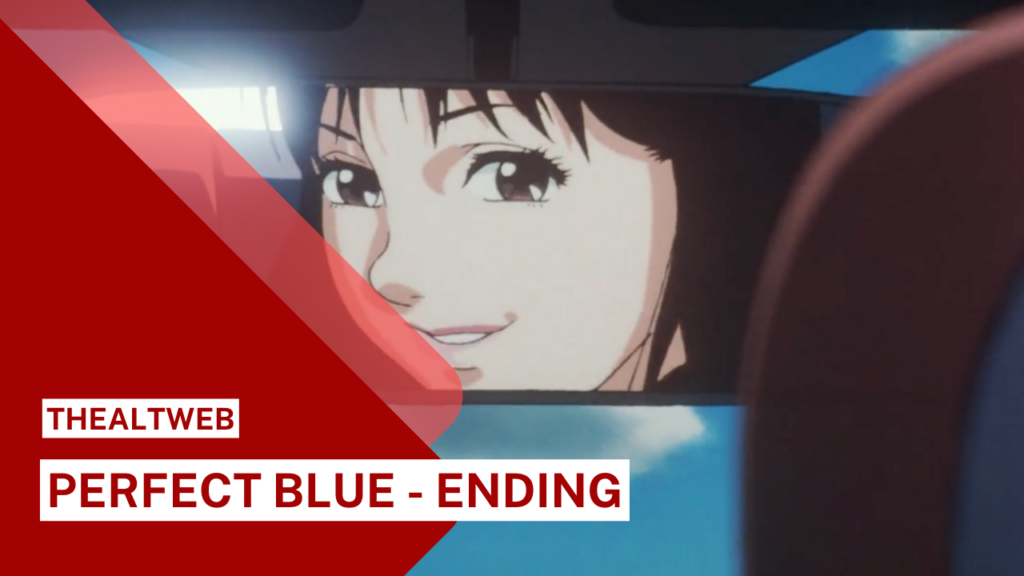Satoshi Kon is one of the great directors who passed away far too young. Before his death in 2010, the Japanese director created just four feature films, each one more magnificent and mind-blowing than the previous. Kon had already established himself as a legend based on his most recent work, and his work from the 2000s continues to have a huge influence in both the East and the West to this day. Kon’s debut movie, “Perfect Blue,” was released in 1997, and it was clear that greatness was in the cards for him.
“Perfect Blue” is a weird psychological horror film that makes no pretense of spectacle or adventure. We follow former J-idol Mima Kirigoe as she adjusts to life on the set of a dreary TV drama, then watches as stalkers and obsessive fans intrude on her personal life. Finally, as Mima succumbs to madness, we plunge into the cinematic territory. Mima’s breakdown is nasty, rough-hewn, and constantly distressing, in contrast to Kon’s earlier works, which have a sense of grandeur and exuberance to the bizarre escalation.
Perfect Blue Explained
Related – Witch Hat Atelier Anime – Release Date, Predictions
Kon employs perplexity as a tactic, eventually pushing the narrative’s boundaries to the point where it’s hard to maintain enough distance from Mima to be “entertained” by her destiny. It’s a bold act of empathy, and the outcome is one of the most horrific cartoons you’ll ever see. Here’s why the movie works so well, especially the finale.
In an odd way, the conclusion of Perfect Blue raises the stakes.
The first rule of filmmaking is that every film has two essential elements: what happens within a frame and how shots relate to one another. Because the entire allure of animation as a medium is that it allows for unlimited images and movement, animated movies by their very nature tend to focus on the former component. Surrealist animation, in particular, promotes fluid, hallucinogenic motion that would be impossible to achieve in live-action — and Satoshi Kon’s 2006 film “Paprika” is a prime example of this.
“Perfect Blue’s” finale, on the other hand, deviates from this assumption. It’s almost like a live-action film’s last scene. Kon uses editing to transport us into Mima’s mind rather than using huge, hallucinogenic graphics. The farther Mima’s madness progresses, the more the shot connections deviate from a linear structure, defying logic, zigzagging from future to past and reality to fiction, and insisting on brutal repeats until we’re completely and hopelessly confused about what’s true.
That’s because the conclusion isn’t supposed to be spectacular: it’s supposed to be deeply felt. The ultimate Mima vs. Rumi clash and its various options for kaleidoscopic beauty would have made a feast of it in a less sympathetic film, but “Perfect Blue” understands it for what it is: a devastating moment. Mima is perplexed above all by the realization that her boss is a psychopath, and we must share her confusion. The terror — as well as the underlying ideas — are inextricably linked to our uncertainty and apathy.
Perfect Blue’s tragedy has many layers to it.
Mima’s sense of self-identity deteriorates as she loses her hold on reality. She can’t tell if she’s the “real Mima,” if events on the “Double Bind” set are occurring to her or to her character, or even how she designed her own apartment last time. However, as the unknowns mount, we, the viewer, gain a greater understanding of Mima. Kon strips away all of the world’s exterior definitions of her — her aesthetic presentation, her work, her public image — and draws us straight into her reality.
At the same time, “Perfect Blue” empathizes with Rumi, the manager who established a parallel ego as “the real Mima” and began murdering anybody who tried to guide her client’s career in a more mature direction. Rumi has been through the same ordeal as Mima as a former pop star, and her illness is the long-term outcome of a life of dehumanization. She clings to CHAMcandy-colored !’s sheen because, as Mima’s experience on “Double Bind” shows, maturity only adds to the agony of women like her and Mima. They will never be able to escape patriarchal culture.
Regardless of how you read the final phrase, it’s unsettling.
Rumi is both a ghost of Mima’s past and a horrifying mirror image of her probable future in this multi-layered tragedy, which is resolved as quickly as it is disclosed. Following the climactic violence, we are treated to an epilogue in which Mima has become a well-known dramatic actress and Rumi has been committed to a mental institution. The feeling of discomfort, on the other hand, never truly goes away – everything happens so quickly that we haven’t had time to settle into “normalcy” yet. To allay our fears, Mima looks at us via the rearview mirror of her automobile in the last scene, then exclaims, “I’m the real one!” in the most sugary voice possible.
We can’t be sure, but any interpretations should include that Matsumoto also supplies Mima’s singing voice at the start of the film. As a result, the final statement either exposes that we’re looking at Rumi or makes a terrifying thematic connection between Mima’s sudden celebrity as an actress and her J-pop history, hinting that they’re two sides of the same coin. Neither of the endings provides Mima — or us — with the consolation we want. Hers is, after all, a systemic problem, not just a momentary one.

